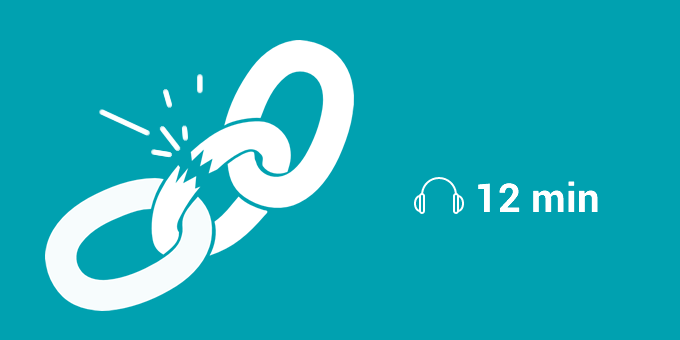Linda Boertjens, co-founder of Catchi and a senior Digital Conversions Specialist, talks about the chain of yes’s and how to apply this important concept to boost conversions on your website. The chain of yes’s is a representation of the journey that visitors go through when they visit a website and can be designed by the digital marketing team. Listen to the audio below to benefit from her insights.
Key points on the audio:
- When visitors land on your website, they should be able to clearly identify the main flow they should follow.
- To facilitate this process, we recommend virtually “holding their hand” and guiding them along to take the action you want them to take. You can do this by carefully crafting and facilitating a step by step user journey that takes them from generic information to the individual product and service information that they need.
- Each visitor journey is different and depends on the visitor’s goal: find contact information, local offices/addresses, book an appointment, send an inquiry, buy a product, get a phone call, etc. Our goal as digital marketers should be to offer the right information at the right time in their inquiry process and create a strong “chain of yes’s”.
- While browsing, your visitors consciously or subconsciously say yes or no to every step on your website. They continuously make decisions on whether or not they want to stay on your website, based on their experience. If they say yes, they stay, but if their mind says “No”, you lose them. The key thing to realise is that you only need one “NO” to lose them. So the goal is to create a chain of yes’s, all the way to the end conversion goal. In our view, their journey should be fluid like a river with water flowing through, and with as little obstructions as possible.
Here are 5 important ways you can improve your website’s chain of yes’s:
- Strengthen your homepage.
Your homepage offers the first impression of your business and it’s often the most visited page on a website. As with anything, you never get a second chance to make a first impression and in only a few seconds of viewing, you have set up your visitors for either a success experience or a bad one. It’s important to keep your homepage clear, simple and to the point. Offer high quality, high level information on what your company offers and why the visitor should look at your products and services. Then make sure the visitor is directed in a clear way towards more information about your specific Value Proposition. The use of clear headlines, imagery and testimonials is recommended on this location.
- Communicating benefits and offering a strong, tailored CTA.
It is important that your product or range of services is very clear, therefore make sure to communicate the benefits clearly and offer a strong, tailored CTA (call to action). A strong CTA is a clear opportunity to create another “yes” in your chain and can help increase your leads significantly. Keep in mind that people who look at a CTA should almost immediately know what they will get/see by clicking the button. This can be supported by including a verb such as “Get…. Now” or “Receive a free report here …”. Another more advanced opportunity is to personalize the content and CTA. For example, if a person has downloaded an offer and comes back to your website they will see different content than someone who did not download the original offer. To solidify your CTA copy, we strongly recommend A/B testing your CTA’s to ensure that you are providing the most effective CTA’s. You should test the placement, the layout, colors, copy etc.

- Generate interest via clear, enticing information.
To continue a strong flow from your category pages to the product pages (and hence create a strong chain), it is crucial to generate strong interest for your product range by offering a clear overview, an efficient way to filter your product range and a clear way to select an individual product to review. The particular product or service selected should then be presented effectively by providing excellent, clear product information, clear benefits, powerful testimonials, good ratings, urgency, etc. Finally, it is beneficial for this page to offer a friendly, non-threatening way to connect with you if they choose to, plus –most importantly- a smooth way of ordering. Many obstacles we see that really harm conversion rates lie in a check out process that is too long or complex, which really turns people off.
- Improving your checkout process.
As touched on in point 3, a good checkout process is a must to keep your chain of yes’s intact and ensure end-conversions. Keep the checkout process as smooth as possible. Reconfirm the benefits were possible across the flow and overall continue to offer reinsurance until the payment has been received. You could do that by using payment logo’s, having a guest checkout and offering clarity around what happens next. Make sure that the chain is good. If you get a “no” in the checkout process, everything you did in the earlier process was a waste of time.
- Analyse Google Analytics data.
Data is king, and these days it’s absolutely crucial for a Digital Marketer to use Google Analytics to learn about visitor behaviour. Our work as Conversion Optimisation Specialist leans heavily on the data we analyse from Google Analytics, which offers key insights on where the chain of yes’s seems broken and where the low hanging fruit for improvement is on the site. So if you aren’t doing so already, our recommendation is to review the Google Analytics data of your website and use this to make decisions for strengthening and action.

What are common mistakes we come across?
- Optimising check-out only.
We see companies optimise the check-out only without looking into the previous pages that lead traffic into the checkout funnel. Even though it’s a good location to focus on, it’s still very important to review and experiment on the full funnel. If there is a blockage earlier in the funnel that makes visitors say “no” and hence break the chain, then this needs to be addressed first otherwise your check-out optimisation won’t yield the results you are expecting.
- Assuming the visitors pathway.
Another mistake that is made is assuming that visitors take a certain pathway without actually checking this. Sometimes we notice our clients make assumptions about where visitors possibly click next or where they should click based on how they feel the visitor should behave rather than the actions they actually take. Again: “knowledge is key” so make sure to check the results and your analytics. Visitors could (and often take) take different steps than you expect.
- Lack of alignment between ads and landing pages.
This is more common that you might expect. The visitor journey starts at the first point of exposure; therefore your chain of yes’s starts with your ads. It is crucial to align the content on your landing pages with the ads you exposure your audiences to. If there is not enough alignment between your ads and pages or points of contact in the funnel then this creates friction and the possibility of a “no”. Alignment can be created by using the same wording and imagery. If your ad for example is focused on a particular deal or a specific audience, this needs to be covered clearly on the page they land on to generate a feeling of “I’m in the right spot”. They are looking for a confirmation which they will find when they see a repetition of words or images. If the content is misaligned, visitors get confused and might click back or search further.
- Placement of and repetition of content on the wrong location in the funnel.
There is a time and place for everything, including certain information on a site. On their browsing journey, it’s most effective to present visitors with content in a flow that goes from generic to very specific; on your website this can be translated by offering generic, company specific information on the homepage which then leads to more details on range on the category pages and eventually product specific details on the product detail pages. We discourage our clients from jumping in with highly detailed product information straight on the homepage, or on locations such as the “About us” page, which should cater for information that is tailored to that particular page. The homepage for example benefits from an introduction to the company and value proposition plus trust building elements. Pushing product and service information on all the pages creates too much duplicate content and confusion, which will harm conversion rates.
This is in a nutshell what the chain of yes’s us about. We hope this content has triggered some “aha’s” and ideas for a more effective website and a stronger chain of yes’s. Remember, the more times your visitors say “yes” within your channel, the higher your chances of getting them across the finish line and increasing your conversion rates.
For more information, feel free to get in touch with our team or leave a comment below.

